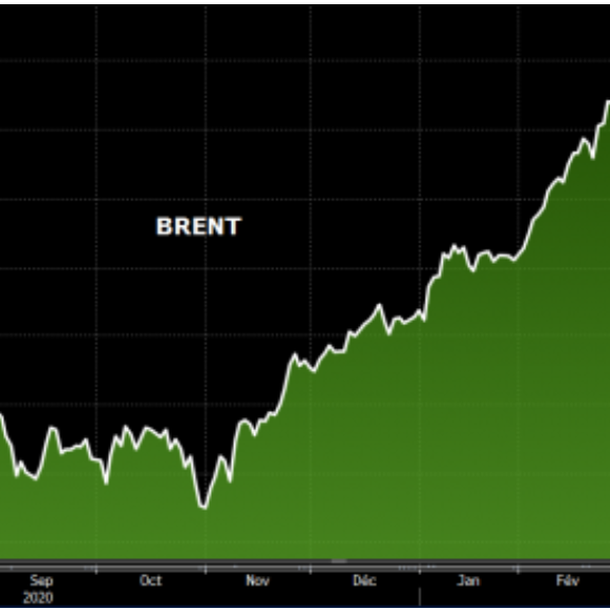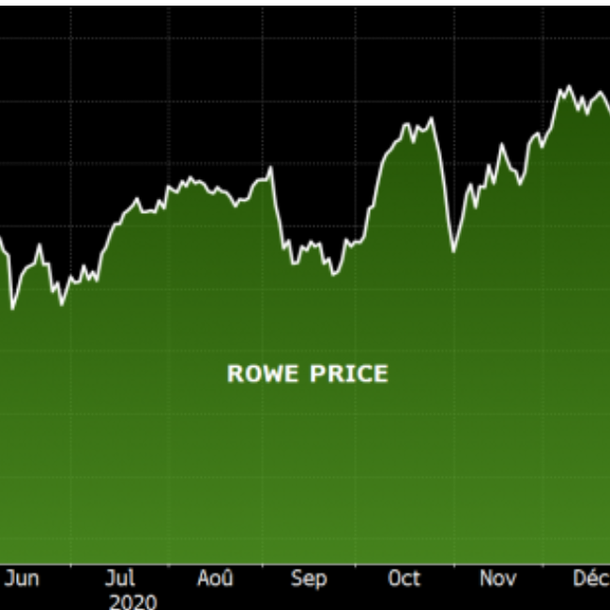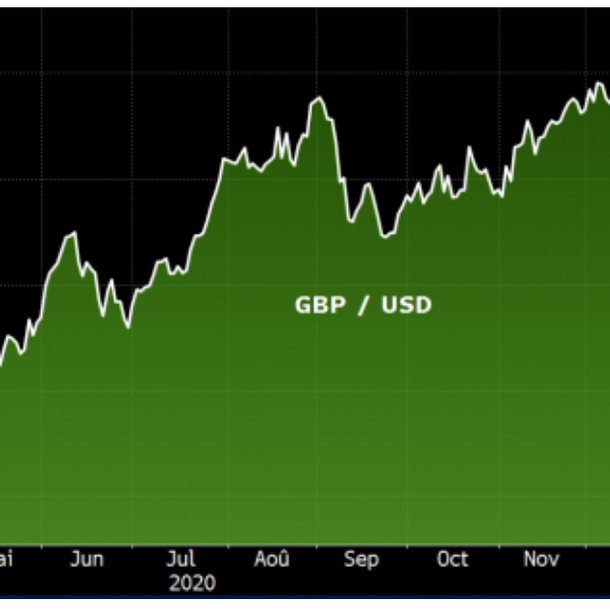|
Monday February 8 | Weekly market update |
 |
After their worst week since the end of October, financial markets bounced back last week, reassured by good statistics, good results and hopes of the imminent adoption of the massive American support plan, which could be approved without the help of Republicans. Health fears have also eased somewhat, with the prospect of an acceleration of vaccination campaigns in the coming weeks, rekindling the risk appetite of stakeholders. |
| Indexes Over the last five sessions, all major indices have picked up. In Asia, the Nikkei, Hang Seng and Shanghai Composite gained 4%, 3.3% and 0.4% respectively. In Europe, the CAC40 rose by 4.7%, up 1.9% since the beginning of the year, while its German counterpart, the Dax, gained 4.6%, setting a new all-time record (+2.5% since January 1). The Footsie, for its part, has won 1.5%. For the peripheral countries of the euro zone, Spain performed by 5.5%, Italy by 7.1%, while Portugal lagged behind, the latter gaining 0.8% over the week. In the U.S., technology stocks led the way, allowing the Nasdaq100 to score a new high with a weekly performance of 4.8%. The S&P500 is also at its zenith, scoring 4.6% while the Dow Jones gained 4%. |
| Commodities In a succession of five bullish sessions, oil markets have achieved a perfect week. OPEC+ maintained the prevailing optimism as the extended cartel is hopeful about the recovery in oil demand this year and therefore sees "an acceleration of the rebalancing process" of supply and demand. Brent is thus trading at around USD 60 per barrel while WTI is trading around USD 57. Gold is losing ground, weighed down by the rise of the greenback. The gold metal thus returns to trade around 1820 USD, its lowest level since November 2020. Silver, on the other hand, has reached $30, boosted by Reddit traders, who have not been able to keep silver at these levels, however, as it is now trading around $27. Finally, the time has come to stabilize prices in the base metals compartment. Copper is consolidating at around $7,830 per metric ton, nickel is sinking at $17,500, while tin is advancing cautiously at $2,430. New acceleration of the Brent  |
| Equities markets Rowe Price Group Inc is a Baltimore-based U.S. asset manager. As of December 31, 2020, the firm had over $1,470 billion in assets under management. The company offers its clients a wide range of mutual funds and advisory services for both private and institutional investors. In 2020, the company posted revenues of $6.2 billion, a 10% growth over its 2019 revenues. According to analysts' forecasts, it should also increase in 2021 by more than 17%. In addition, the company generates operating margins above industry standards. With a net cash position of more than $2 billion, the group has shown resilience during the crisis. Finally, T. Rowe Price is paying itself a little more than 13 times its 2021 earnings, affordable multiples given the quality of the company's fundamentals. Since March 25 and its 2020 annual low of USD 85.42, the stock has recovered more than 87%. It is now following a long-term upward trend. Rowe Price Group's share price has grown steadily  |
| Bond market The Bund's yield spreads on peripheral debt instruments narrowed. This is mainly due to the more optimistic climate on financial markets. The German benchmark is trading on a -0.35% basis, the French OAT is also rising to -0.25%, while 10-year sovereign bonds issued by southern European countries are stabilizing, as in Italy (0.52%), which has just put Mr. Draghi in the government's hands. Portugal and Spain saw their government bonds pay just above the symbolic zero. This upturn in secondary securities is intensifying despite the economic uncertainties. Investors are looking for performance on positive rates. Government debt managers are therefore taking advantage of these exceptional interest rate conditions. If deficits explode (120% of GDP in France), the financial burden of interest is considerably reduced, up to 50% less for France. In the United States, bond yields continue their upward trend and generate a 1.13% interest rate. Hopes for the recovery plan are not unrelated to this movement. |
| Forex market The dollar advanced against most of its Group of 10 peers. In four days, the greenback recovered about 200 basis points to trade around 1.20 against the euro. As a result, the U.S. currency is trading near its highest levels in a month, supported by promising employment data. On the other hand, delays in vaccine deliveries to Europe appear to be weighing on the single currency. Across the Channel, the pound continues to move up to 1.37 against the dollar, a 12-month high. The pound continued to gain ground against the yen at JPY 143.30, a gain of 800 basis points over the past three months. Even the Swiss franc weakened against the British currency, trading at CHF 1.23 (-500 basis points over the same reference period). On the southern hemisphere side, the Australian central bank decided to keep its key rate at 0.1% but signaled its willingness to continue to support the economy with an accommodative monetary policy by increasing its asset buybacks from AUD 100 billion. This surprise announcement immediately put the AUD under pressure at USD 0.76, against a recent high of 0.7820. Pound advances against the dollar  |
| Economic data In China, business growth slowed, as did the Caixin manufacturing and services PMI indices, which stood at 51.5 and 52 respectively (compared with 53 and 56.3 last month). In the euro zone, these same indices were slightly better than expected, coming out at 54.8 and 45.4, still reflecting a contraction in services activity. The unemployment rate was stable at 8.3 percent and GDP fell by 0.7 percent in Q4, slightly less than expected. The CPI index rose by 0.9%, the PPI index by 0.8% but retail sales by only 2% (consensus 2.4%). For the US region, apart from the manufacturing ISM slightly below expectations (58.7 vs. 60.7 last month), all macroeconomic data surprised pleasantly. Construction spending rose by 1%, industrial orders by 1.1%, and the ISM services index stood at 58.7. In terms of employment, the ADP reported 174K job creations in the private sector and the monthly employment report was mixed, with an unemployment rate at 6.3% but only 49K jobs created and an hourly wage up 0.2%. |
| Results confirm divergent trajectories Markets have quickly moved through a turbulent period, but the trajectory of indexes seems to have returned to a relative calm, with the publication of annual results. Yet this crucial phase for companies, which present both their actual data and their outlook, highlights divergent forces. On the one hand, technology groups, which are posting stratospheric results despite the context, or rather thanks to the context, should we say. These companies are taking advantage of their abundant cash flow to expand their preferred fields into new sectors such as automotive, medicine, and even sports. On the other hand, we find cyclical stocks, such as companies in the tourism industry and oil companies, which are posting the worst losses in their history. The economic world is therefore experiencing a real split. |

 By
By 










